Antique dishes are delicate pieces of art that carry so much history. Their designs, patterns, and shapes reflect a period of pure craftsmanship, eye for detail, and raw talent that makes them very collectible in modern times.
The Ru Guanyo Brush Washer Bowl, released between 960-1127, auctioned for $37.68 million, making it the most expensive antique dish to have been sold at that time.
These dishes have set the tone for current and future productions. We’ll address it all in this article, from their history, how to identify them, discover their value and update your knowledge about some of the most valuable antique dishes worth money in recent times.
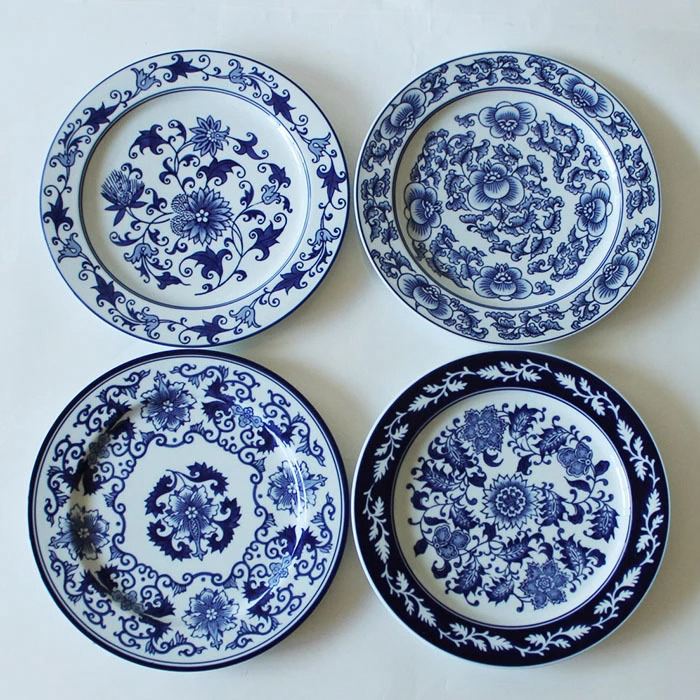
Table of Contents
Understanding The Different Types of Antique Dishes
Different types of antique dishware have also originated from different periods and places. This guide will introduce you to the types available.
Silverware
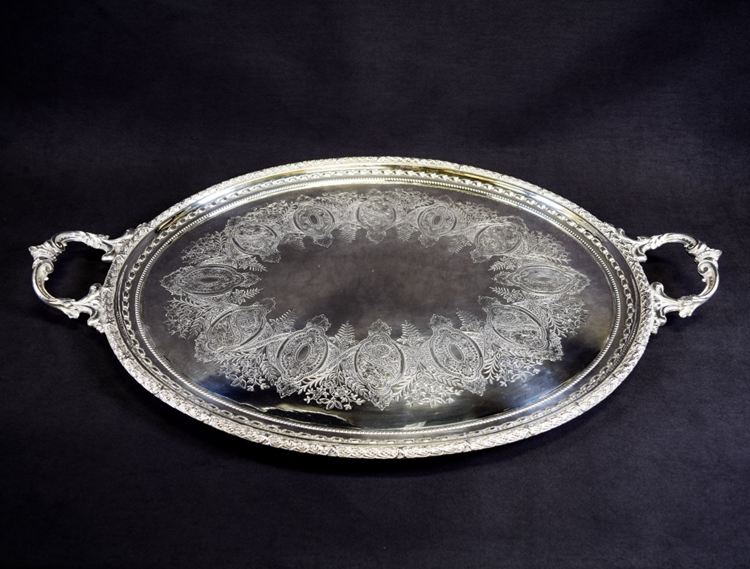
Here, we have the money maker of the antique dishes gang. Silverware dishes are expensive because of their ability to last long while maintaining their initial state of shine and newness. You’ll find them custom-made for old kings like the German Soup Tureen crafted for King Louis XV of France and went up for $10 million at Sotheby’s.
Porcelain
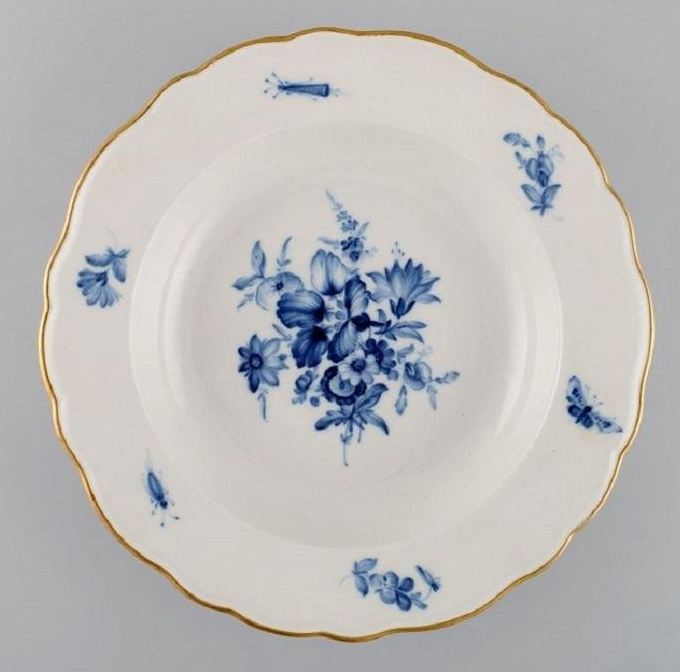
Porcelain is made from kaolin clay which can withstand a heat of about 2200-2600 degrees to produce a bright white product.
Porcelain mostly made an impressive percentage of old dishes you’ll find around the house. Porcelain dishes are highly collectible because of their sharp patterns, color flexibility, and solid quality. They will never go out of style, which is why they’re very popular.
Glassware
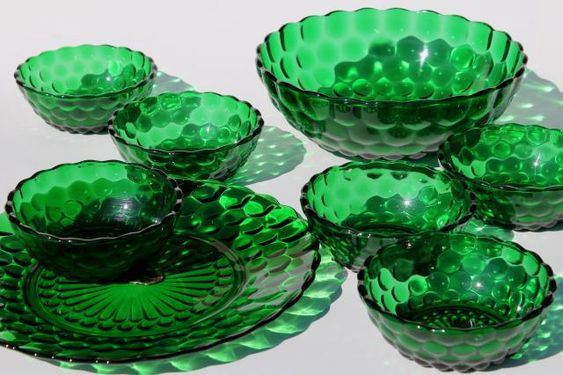
These dishes won’t stay on your table for long as they may fade due to aging, but it doesn’t make them less special or valuable. Depression-era glassware belongs to this category and is highly demanded due to its vibrant colors of blue, pink, amber, purple and clear glass.
They serve as the perfect accessory to your table- which means you get two for the price of one. Tasteful artistry and an excellent aesthetic.
Creamware
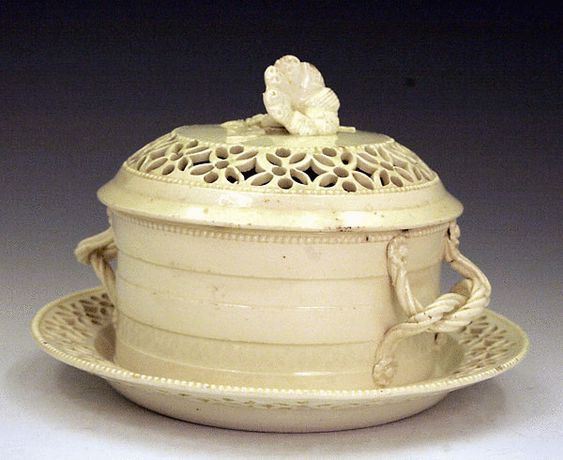
Creamware is like earthenware but has a special creamy hue. A clear glaze is used to carve the plate, giving room for the creamy tone of the dishes to project clearly. This type of dish boasts affordable luxury and longevity even under daily use.
Stoneware
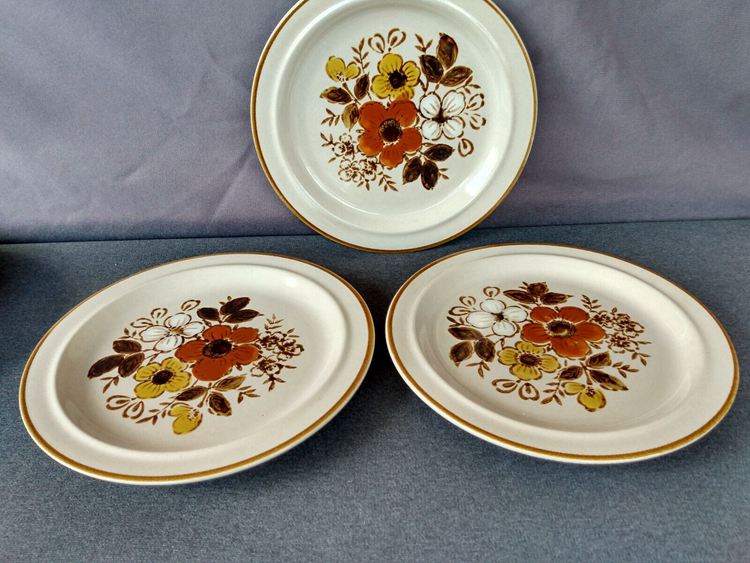
One unique thing about stoneware dishes is that they go through a high amount of fire at the production stage, which makes them waterproof, heavy, impassable, and opaque than existing antique dishware.
China

China plates & wares consist of feldspar, clay, quartz, and other materials. The material is divided into two main categories: Bone and Fine China.
Bone China, like the name, is made from animal bones burnt and refined into a smooth powder. The product is a strong ware.
Fine China is the fragile variant of the two and is highly valued amongst collectors. Antique China pieces add beauty to tables and exist in various colors and shapes.
Marco Polo reintroduced China to Europe and a new era of designs filled with floral patterns, petals and bright colors began, increasing their collectability.
19 Most Valuable Antique Dishes Around Today.
We have compiled a list of the 19 most valuable antique dishes today. These items have been sourced from verified outlets, and any existing lists are purely coincidental.
S/N |
Name |
Release Date |
Price |
1 |
Ru Guanyo Brush Washer Bowl |
960-1127 |
$37.68 million |
2 |
Blue and White Porcelain Bowl |
1426-1435 |
$29.2 million |
3 |
Blood Red Porcelain Lotus Bowl |
1662-1722 |
$11.11 million |
4 |
Copper-Red Ming Vase |
1368-1644 |
$10 million |
5 |
Germain Soup Tureen |
1733 |
$10 million |
6 |
Imperial Famille Rose Peach Dishes |
1723-1735 |
46,040,000 HKD |
7 |
Rare Northern Song Dynasty Ding Floral Lobbed Shallow Bowl |
960-1127 |
28,120,000 HKD |
8 |
Longquan Celadon Octagonal Dish |
1127-1279 |
$756,000 |
9 |
Yongle Period Blue and White Dish |
1403-1425 |
$756,000 |
10 |
Yongle Period Blue and White Floral Bowl |
1403-1425 |
$721,800 |
11 |
Famille Verte ‘JIA SIDAO’ Dish |
1661-1722 |
£101,100 |
12 |
Royal Copenhagen ‘Flora Danica’ Dinner Set |
1900 |
$68,750 |
13 |
16th Century Mother Of Pearl Inlaid Black Lacquer Dish |
1600 |
$25,000 |
14 |
Meissen Armorial Coronation Service Circular Dish |
1733-34 |
$20,436 |
15 |
Madame Du Barry Sevres Plate |
c. 1770 |
$15,048 |
16 |
Oval Mother of Pearl Lacquer Dish |
1700-1800 |
60,000 HKD |
17 |
Sevres |
1787 |
$7,600 |
18 |
Xaunde Period Chinese Underglaze Copper Red Dragon Bowl |
1426-1435 |
€6,144 |
19 |
Wedgewood Creamware Plate |
1800 |
$424 |
19. Wedgewood Creamware Plate
Release Date: 1800
Price: $424
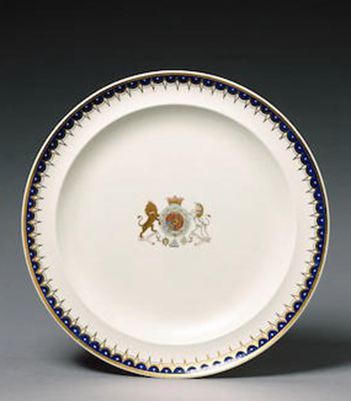
This Josiah Wedgewood creamware plate is from the Duke of Clarence service in 1800. The finely crafted plate features a central armorial with the motto ‘Nec Temere Nec Timide.’ It has a slim blue and gilt edge. The Wedgewood mark is impressed in uppercase.
18. Xaunde Period Chinese Underglaze Copper Red Dragon Bowl
Release Date: 1426-1435
Price: €6,144
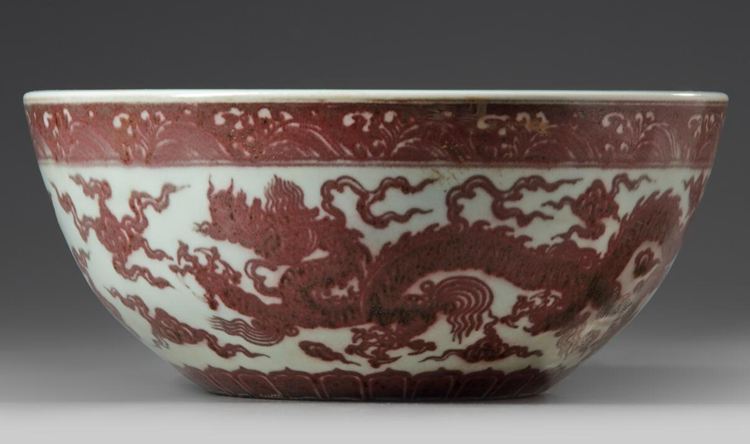
This Xaunde period plate has bright red details of a dragon chasing the flaming pearl amid flaming scrolls right above a lappet band at the base and a wave band at the edge. The interior has an apocryphal Xaunde mark with a rough base.
17. Sevres
Release Date: 1787
Price: $7,600
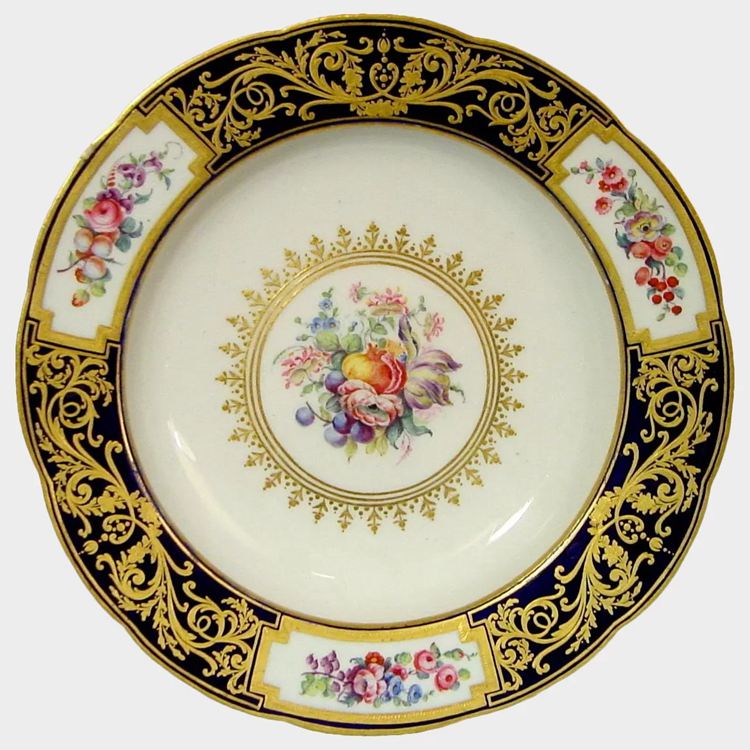
One thing about Sevres plates is that they have a long, rich historical journey, they were produced specially by King Louis XV when he opened a factory at Château de Vincennes, but he relocated the company to sevres, where the plates got their names from.
Sevres plates recorded a high level of patronage in France, especially by the rich who always needed to be on the king’s good side. You’ll find Sevres plates in archives of modern-day France’s elite and royal family.
16. Oval Mother Of Pearl Lacquer Dish
Date: 1700-1800
Price: 60,000 HKD
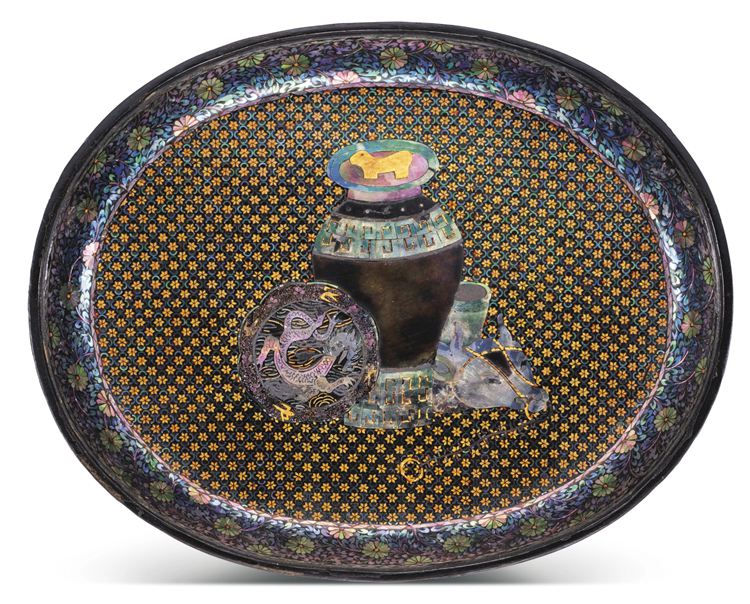
One striking feature about this plate is the floral diaper background with raised details of a large vase with an animal finial cover, a buffalo head cup, and a foliate dish depicting an image of what seems like another mother of pearl inlaid dish.
The plate band consists of floral details- scrolling floral stems in the cavetto and a black lacquer base inscribed with the Yutang Yawan, which means for elegant amusement in the jade hall finally placed in a square panel.
The jade hall is a commonly used term during the late-Ming and early-Qing periods to refer to scholarly studio dishes and pieces of exceptional quality.
15. Madame Du Barry Sevres Plate
Release Date: c. 1770
Price: $15,048
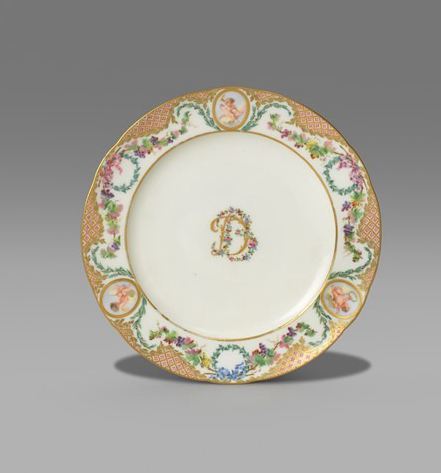
Madame Du Barry’s plate is famous for adding floral details to particular letters of the alphabet, which stays right in the middle of the dish.
This plate in review features a union of D and B in what we assume are the two initial alphabets of Du Barry in orange, violet, yellow and blue floral details.
14. Meissen Armorial Coronation Service Circular Dish
Release Date: 1733-34
Price: $20,436
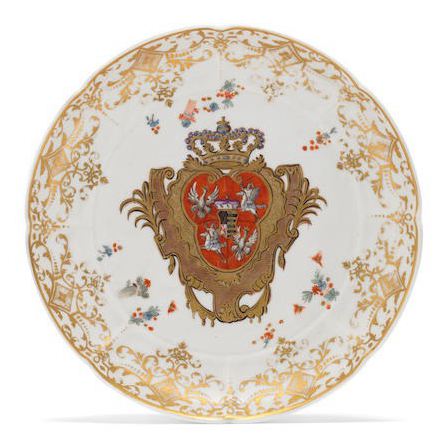
Meissen dishes were produced by Augustus the strong in 1710 after they suddenly discovered the technique of making hot paste porcelain dishes in the German area. Meissen is one of the highly prized variants in the market of porcelain dishes.
They had an exceptionally detailed pattern with a difficult production technique, which has remained top of the list of makers today.
The Armorial coronation service plate is very rare. It has a painted core with the quarter arm of Saxony and Poland. The arm is placed in the middle of a crowned escutcheon decorated with scattered flowers and wrapped hedges showing off the Kakiemon style
13. 16th Century Mother of Pearl Inlaid Black Lacquer Dish
Release Date: 1600
Price: $25,000
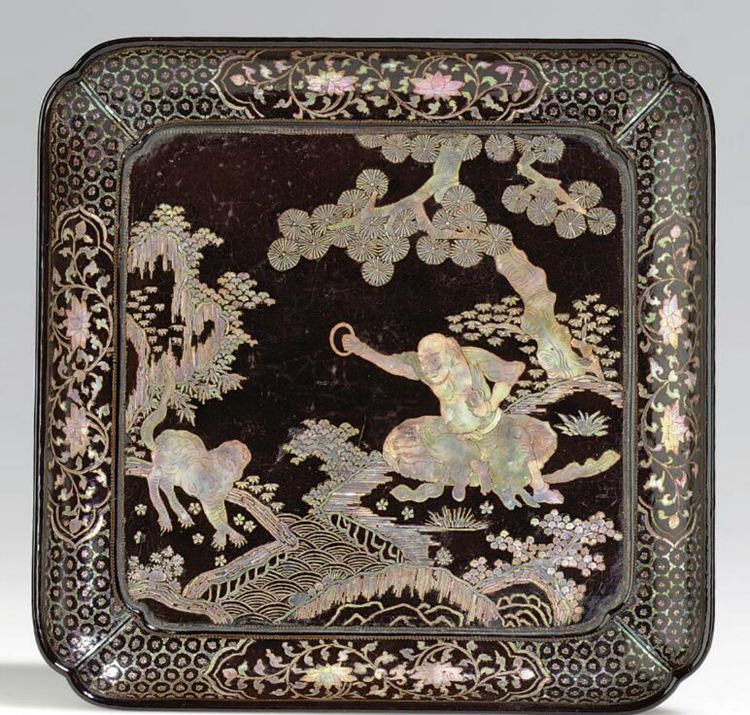
The scene of a Luohan resting on a large rock beneath a pine tree while dressed in open robes to the waist, a raised right hand bearing a ring which he uses to summon a tiger who gazed fiercely at him across a narrow river, is painted carefully on the dish.
The square plate has gold details and a vibrant gold trim at the edge. It’s a rare plate from the 16th-century Ming dynasty and acquired from a Japanese private collection.
12. Royal Copenhagen ‘Floral Danica’ Dinner Set
Release Date: 1900
Price: $68,750
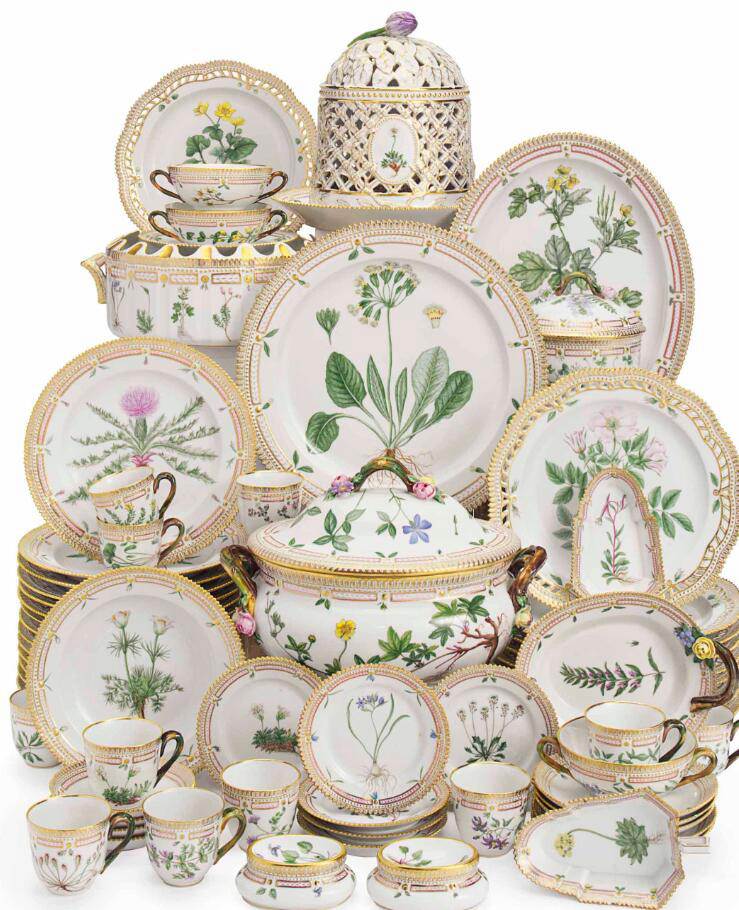
This dinner set consists of royal Copenhagen porcelain ware with blue wave and green printed crown marks in the pattern number 20. The set is a gallery of various botanical specimens and gold trim edges.
11. Famille Verte ‘JIA SIDAO’ Dish
Release Date: 1661-1722
Price: £101,100
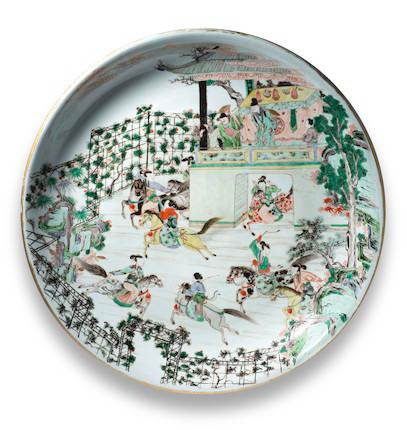
Artists made this dish in the Kangxi period (1661-1722) to tell a story about what minister Jia Sidao enjoyed like female equestriennes in his pavilion garden. On this plate, a seemingly excited Jia Sidao almost jumped off the balcony with a fan in his hand.
10. Yongle Period Blue and White Floral Bowl
Release Date: 1403-1425
Price: $721,800
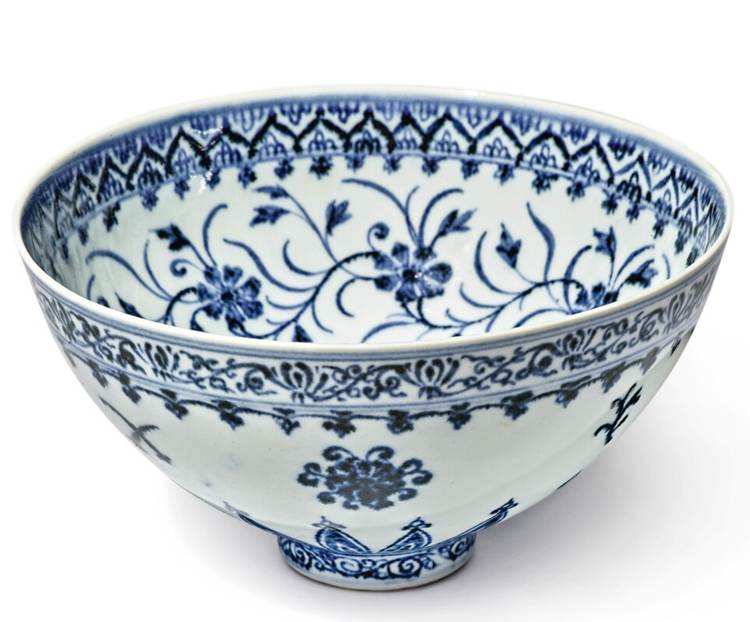
This ball is molded to look like a Lotus bud but with rounded sides and obvious depth. It has a tiny, pointed base resting elegantly on a thin foot.
Initially, a man purchased this Chinese bowl for less than $40 at a Connecticut market, but in May 2021, the bowl went up for $721,800 on Sotheby’s.
9. Yongle Period Blue And White Dish
Release Date: 1403-1425
Price: $756,000
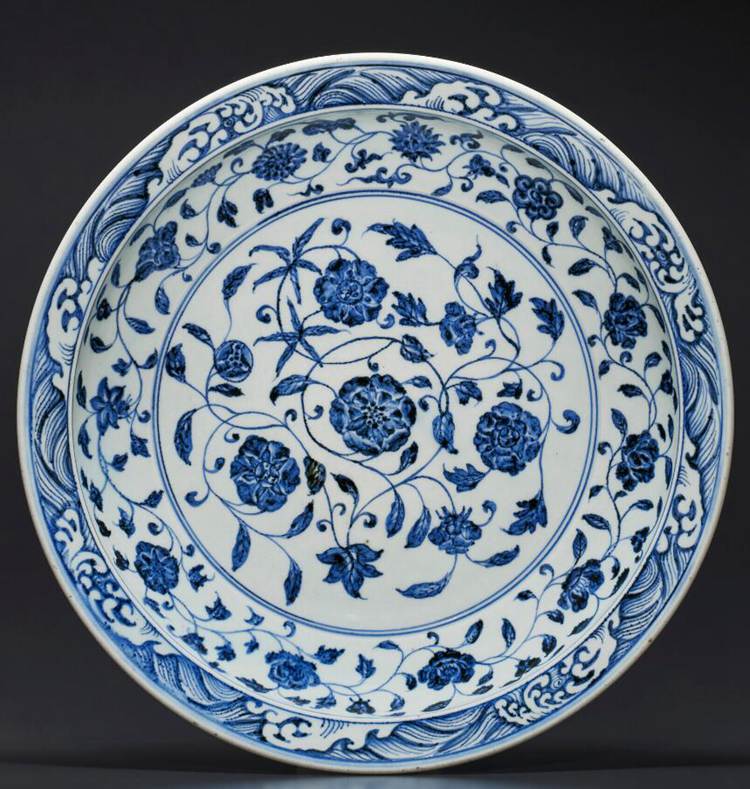
At the center of this plate are six peonies with interconnecting stems and surrounded by a second layer of twelve floral sprays. The outer rim is decorated with a band of a composite foliate scroll in bright tones of underglaze blue.
The large blue and white dish was made during the Yongle period and passed down from four previous owners.
8. Longquan Celadon Octagonal Dish
Release Date: 1127-1279
Price: $756,000
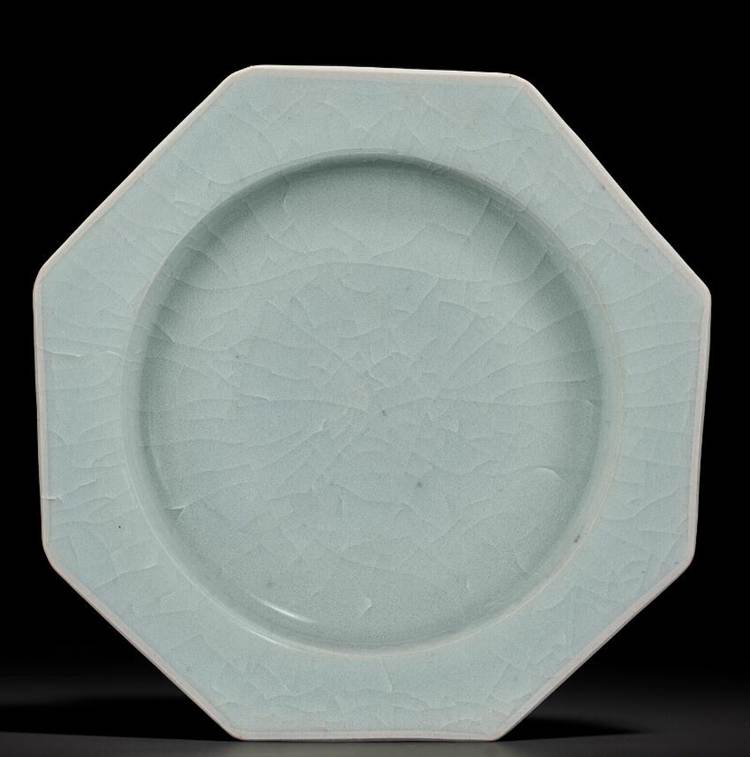
This octagonal dish is one of the rarest dishes in the world to exist, with its origin from the Southern Song Dynasty. It has a round concave center and is painted with a bluish-green glaze topped with faint crackle effects.
7. Rare Northern Song Dynasty Ding Floral Lobed Shallow Bowl
Release Date: 960-1127
Price: 28,120,000 HKD
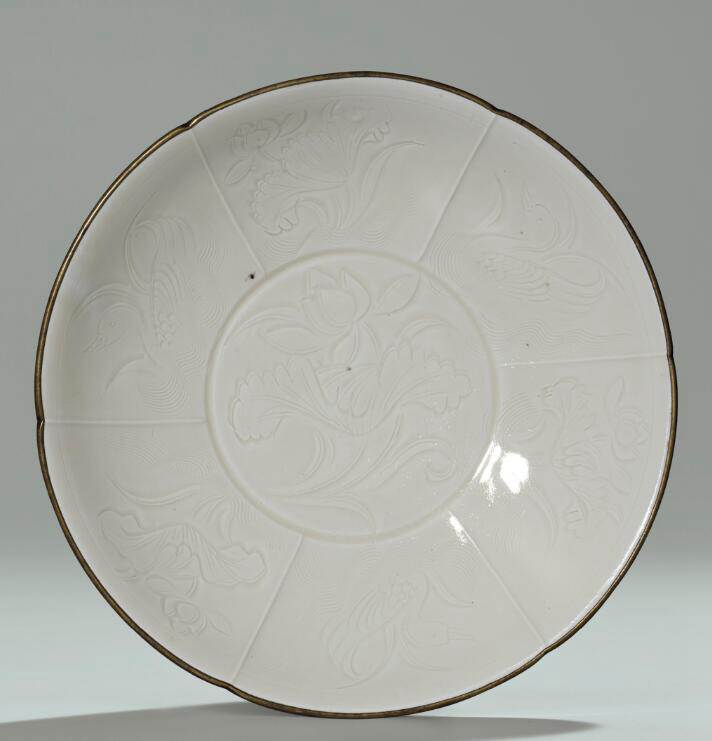
The bowl is a classic example of the Northern Song Dynasty’s finest ding ware which the imperial court admired. Its glossy glaze in ivory goes in unison with its finely textured white exterior.
The bowl comprises hexagonal lobed sides that rise from a short tapering base to an indented rim. The interior is incised by hand and combed for extra details to finally form a shape of a blooming lotus spray right in the middle of the center medallion.
At the center of this bowl are panels of similar lotus spray and a duck swimming between water weeds around the cavetto. The edge of the bowl is coated in brown copper.
6. Imperial Famille Rose Peach Dishes
Release Date: 1723-1735
Price: 46,040,000 HKD
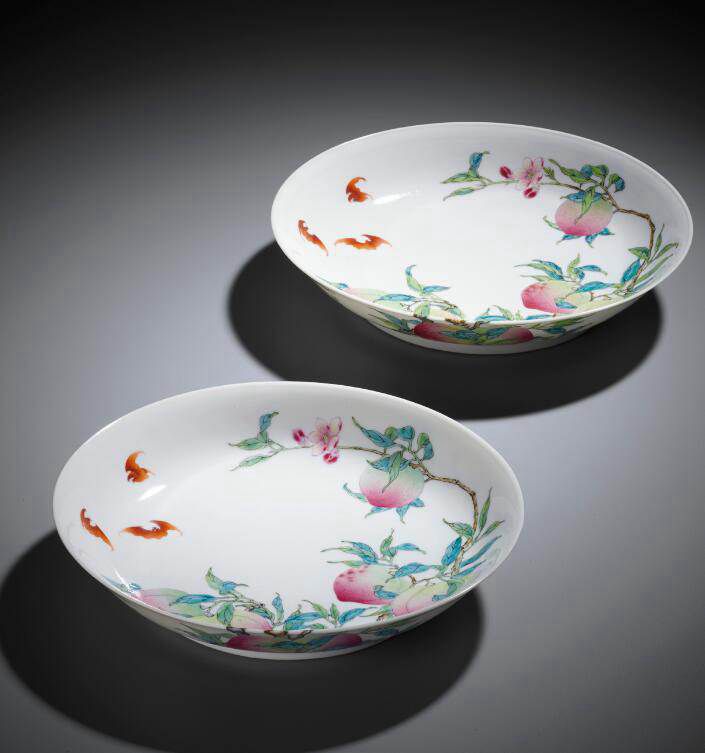
These plates were made in the Yongzheng period between 1723-1735 and are thinly molded with depressed round sides that elevate from a shallow foot ring to a raised rim with soft round edges. They are finely coated in shades of pink, yellow, white, black, green, and blood-red.
In the outer part of the plates lies details of three peaches blooming on flowered branches closely beside two bats. The design extends over the rim and into the center of the plate with five more peaches and three bats.
5. Germain Soup Tureen
Release Date: 1733
Price: $10 million
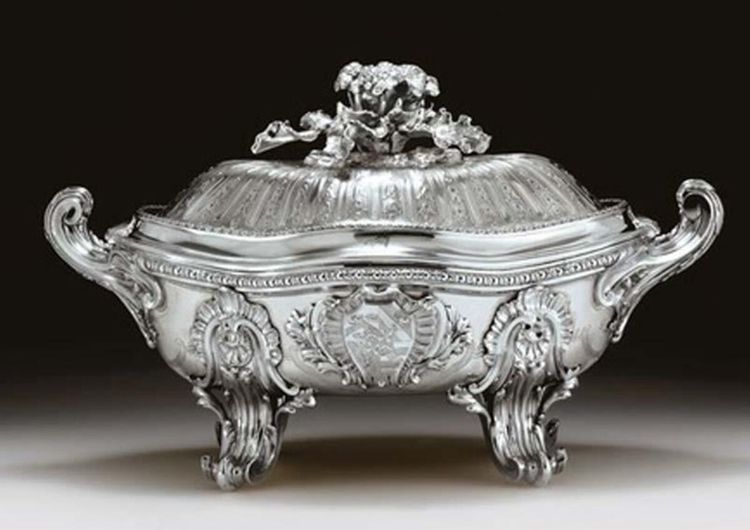
The Germain Soup Tureen was and is still the most expensive piece of silverware in history. It’s a customized tureen for King Louis XV of France by artist Thomas Germain. It went up for $10 million at Sotheby’s auction.
4. Copper-Red Ming Vase
Release Date: 1368-1644
Price: $10 million
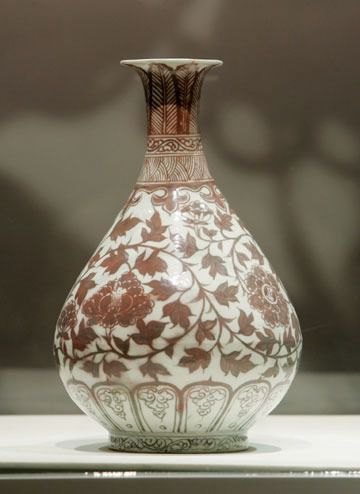
This antique vase originated from the Ming Dynasty and is a pear-shaped piece designed with a peony scroll. The vase is the only existing vase from the Ming Dynasty in complete condition. The piece comprises Agate, Pearls, Jade, and other unique, rare materials.
You’ll find a cobalt-blue hue called the Qinghua in ancient Chinese society in the inner corner of the vase and other dishes from the Ming dynasty.
3. Blood Red Porcelain Lotus Bowl
Release Date: 1662-1722
Price: $11.11 million
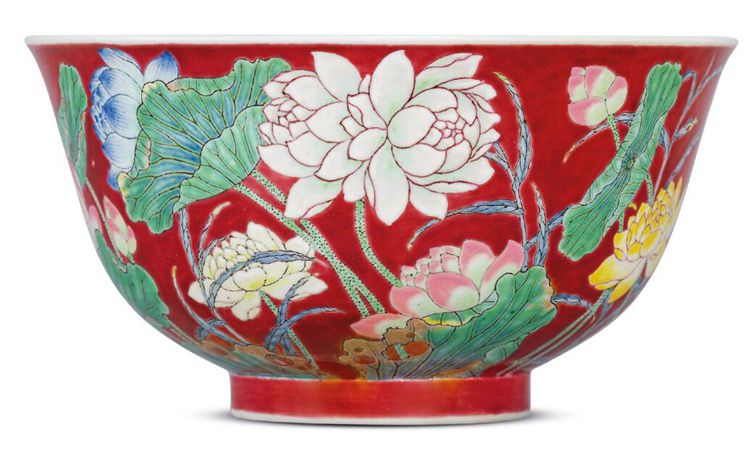
Red in Chinese history stands for ecstasy, joy, tranquility, and purity. Little wonder this red bowl holds so much significance in Chinese history. The blood-red porcelain used to produce the red lotus bowl was discovered around 618 in the Tang dynasty.
The production of the blood-red porcelain lotus bowl is very complex, and it requires a high level of mastery plus quality raw materials. However, the production stopped completely during the Qing Dynasty, making the existing ones rare and highly collectible.
2. Blue and White Porcelain Bowl
Release Date: 1426-1435
Price: $29.2 million
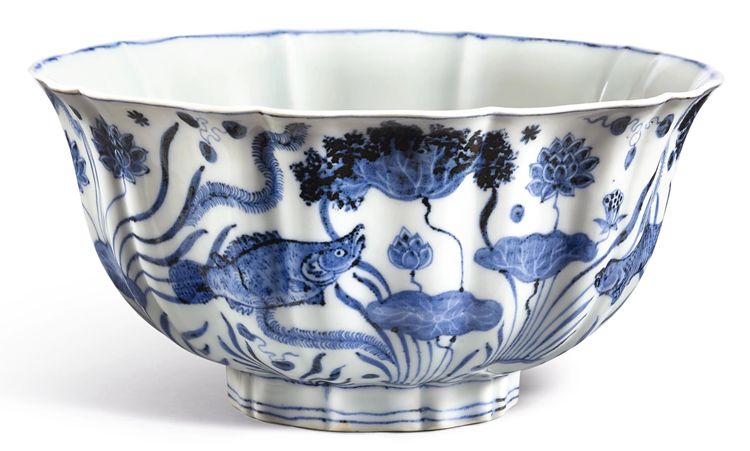
This blue and white color is the theme for most dinner sets you’ll find in modern homes everywhere in the world. The color didn’t descend from space. There’s some back story to it.
The color is a product of Cobalt Oxide, a very expensive material, even more than gold or diamond. The dish is heavily revered among collectors, and the style has so much influence that some parts of Europe used it on their transferware to make it accessible to the masses.
The unique fishpond pattern bowl was created during the Xuande period in China and sold at an auction at Sotheby’s.
1. Ru Guanyo Brush Washer Bowl
Release Date: 960-1127
Price: $37.68 million
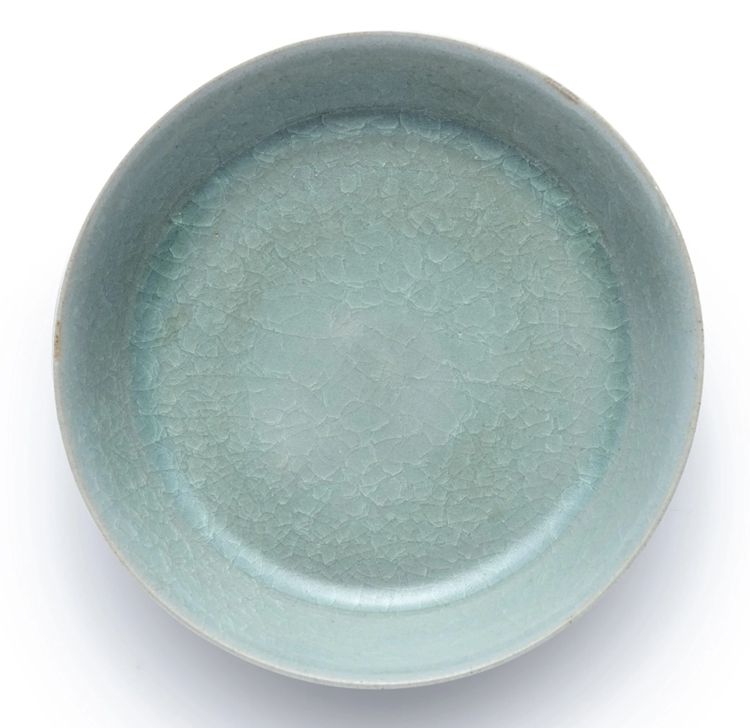
History shows that the Old Northern Song Dynasty, which existed from 960-1127, built the bowl from the most famous of the five great molds. The mold lasted for over two decades, and the ceramic is one of the finest and sought after.
The Ru Guanyo bowl has attained a near godly status in Chinese history, having existed for a millennium and showcases China’s extremely artistic society.
It has a rare turquoise glazed finish that resembles ice crackles at a close glance, with three sesame seed dips showing where it sits on kiln support during the creation.
How to Identify Antique Dishes
The following guidelines will help you blur the lines between antique dishes and identify them. If you’ve seen it as a task, trust this guide to help you simplify the steps.
Contact an Appraiser
To identify your antique dish, you must understand that appraisers are necessary to help you understand its origin, history, engraved designs, and patterns. These qualified practitioners have the lengths of experience required to provide needed assistance. Check them out below
Determine its Age
you must find the edge of your antique dishes to recognize their pattern shapes and a bit of their history. In the real sense of the word, an antique dish must display some aging traits like cracks, chips, and flea bites.
Check for Maker’s Mark
During production, many manufacturers stamped their dishes with different marks for easy identification over the years especially due to the McKinley Tariff Act; these marks have evolved or gone out of use due to the extinction of their production company but have become identifying marks for modern use.
Most of the marks for pre-1899 dishes were inscribed on their surfaces. While for 1900 dishes, these stamps are logos printed on the bodies. Early logos were quite smaller in size compared to the latter and modern versions.
On an English plate produced around 1855, you may likely find the inscription “Trademark” on them. However, some English companies which sprang up around 1886 put a twist on it and included the “LTD” moniker at the back of each company name.
Haviland, Knowles, Gorham, and many American companies made dishes differently. They included individual names for quick and seamless identification.
You must take it further while researching the name of the company and the period during which your dish was made to supply you with more information.
When checking for a maker’s mark, flip your antique dish over and carefully look at the underside for any logo providing information about the factory. For very old dishes, these marks may have faded over time, leading us to the next point we will discuss.
Study the Patterns
You may have heard or read in the books about patterns in some specific plates made by companies or in specific periods. This is one of the easiest and fool proof ways to easily identify your antique dishes.
Patterns are important in antique dishes because of their peculiarity, uniqueness, and origin. No two companies have the same patterns; they either put a twist on it, or they are just completely different.
Some of the most common patterns you might find on antique dishes include- Old Country Roses, Tobacco Leaf, Azalea, Buttercup and Summertime
Read Up Guides
Readers are leaders, which is exactly the case when identifying antique dishes. You must not cut back on reading up on identification guides made available on the Internet or in your local library.
These guides are filled with enough information from patterns to makers to types and periods where these antique dishes existed or originated from. You also discover rare antiques- chances are high that you probably have one or more of these expensive lots lying in your basement.
Here’re a few guides for you
- Hand Painted Porcelain Plates: Nineteenth Century Till Present by Richard Rendall
- English China Patterns & Pieces (Identification and Values) by Mary Frank Gatson
- China and Pottery Marks
Watch this video on everything about collecting Antique dishes.
How to Know the Value of Antique Dishes
Determining the value of antique dishes is not impossible. Whether you choose to do it on your own or use the help of an appraiser, this section will help you dot the necessary I’s and cross the important Ts on your journey.
Condition
Like any antique item, the value of your antique dishes is heavily determined by the condition the collector or buyer meets it in. if your plates are broken, chipped, or heavily cracked, you’ll never get the value’s worth. No one will collect or buy it.
For complete sets which are valued higher than single pieces, ensure that every piece is present and in good condition. To prevent broken pieces, keep your wares wrapped in soft cloth, away from contact.
Consult an Appraiser
You can also take your dish to the nearest appraiser if you have trouble finding it’s value. They are equipped with the necessary skills to know which rare, old, or original dish. One problem with antique items is reproduction, and appraisers help to control that.
Check out this appraisal video to get an idea of the whole process.
By Their Pattern And Design
The design of your antique dish can increase the current value by a large percentage. Coffee pots, salad plates, dinner plates, and cake plates are highly sought after, hence higher value. Certain patterns also tell a rich story and collecting them is a way of keeping history. You get an added advantage if your antique dish has rare patterns.
Complete set also sells for a higher price than individual pieces. Keep an eye out for those precious antique dinnerware sets that your great grandmother adored dearly back in the day.
Origin of Your Dish
China and Glassware pieces from England or America are very desirable. You can get their origin by checking their backs for stamps. Bone China in England usually has a crown stamp underneath it for easy recognition.
Same as the vintage dishes produced in America or England after the civil war; they come with marks indicating their place of manufacture.
An example of how the origin of your dish affects the value is that the Dansk’s Christianshavn Blue Dish created in Portugal costs more on the market and is highly valuable than the one produced in Thailand.
Provenance
Previous ownership of your antique dish by someone reputable can increase collectability, demand, and perceived monetary value.
Most antique dishes that have been auctioned around the world belonged to major kings, from significant eras (Like the Victorian era dishes) and persons of substance in history.
Rarity
The harder it is to come by a dish, the more valuable it becomes. So many great dishes have been made with little, or none of them left on the surface of this earth (there may be reproductions, which don’t matter in the grand scheme of things).
So, if you’ve duly confirmed with the help of your appraiser that your stuff is legit, then you may just be the next big collector in the industry. Note that most dishes that are termed as rare were used to celebrate special occasions back in the day.
Read Guides, Catalogs
Published guides and catalogs are there to help you discover the value of your product without hassle. Check the nearest local library, antique bookstore, or do an internet search to get yourself a price or value guide, check previous selling price and begin collecting.
Preference
A person attaches value to what they admire; if an antique plate stays in a spot without invoking interest from one or more persons, it can never achieve that state of desirability regardless of the actual value or history.
Here’s a video for further learning.
Where to Get Antique Dishes
Here’s a list of places to get your valuable antique dishes
Auction
Auction houses and online auction platforms like Sotheby’s to Christie’s, Metropolitan museum to Liveauctioneers and the likes, you can get a piece of history too.
Although you must fight tooth and nail with many other buyers as auctioned goods are always in high demand, the experience is nonetheless thrilling.
Antique Stores
Dishes are one of the most common things in antique stores spread around the city. Although they tend to have their section due to their fragility, it doesn’t mean that you cannot have a look at their inventory and select for yourself.
Antique stores can also be found online, like Rubylane, and Chairish .These online sources have antique serving pieces, tea sets, vintage glassware, and porcelain wares in abundance for your purchase.
You may probably find these dishes for ridiculously low prices, which is why research is very important, as you can literally turn these vintage items into money bags!
Flea Market
Flea markets are small, well organized, and mostly made up of old stuff. Therefore, we have selected it as one of the places where you can easily find antique dishes.
One advantage of flea markets is that it gives you the opportunity of having a one-on-one discussion with the antique dealer, who can also be the owner; you get to know the history, maker, and origin of these plates.
Yard Sale
Yard sales are very frequent in American communities. It provides a means for people to declutter piles of collectibles and valuable items. These sales are usually organized in front of the houses and open for people to check and bargain.
Because of their small nature, goods in yard sales are very cheap (about a few hundred dollars), home sourced, and mostly of very high quality. One more thing about yard sales is the provenance clause which can help you increase the value of your product exponentially should you ever decide to sell.
Online Sites
Online sales platforms like eBay, Etsy, 1stDibs, have curated sections where you can purchase antique dishes. You can do all of these in the comfort of your home and get it delivered to your doorstep.
Online sources are normally the most preferred option for younger people who don’t really fancy auctions and flea markets.
Parting Words
One thing we can agree on from the start of this article to this point is that antique dishes are integral parts of human history and should be kept by all. As you proceed to collect them from your great grandmother’s attic, here are a few points to note.
- Ensure to always keep your old dishes in good condition, to get the best value.
- When in doubt, seek the help of an appraiser; they are available and affordable.
- Make sure to read guides, and catalogs on antique dishes if interested.
- Be wary of reproduced plates; they do not hold any value and will only occupy space.





![Where To Sell Antique Furniture In 2022 [Ultimate Guide]](https://www.jacquelinestallone.com/wp-content/uploads/2022/09/Etsy-Your-Place-To-Buy-And-Sell-All-Things-Handmade-600x450.jpg)


